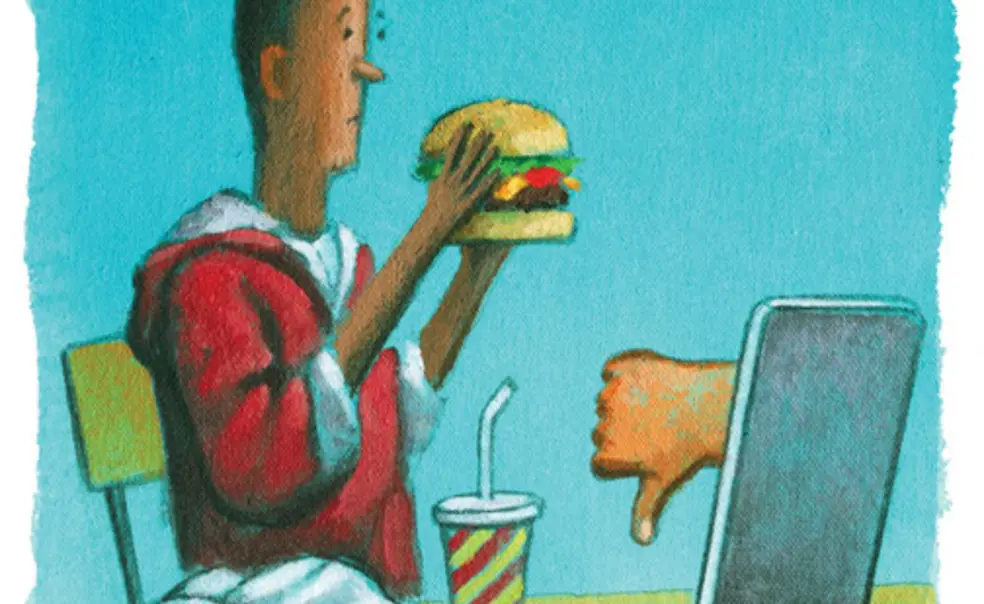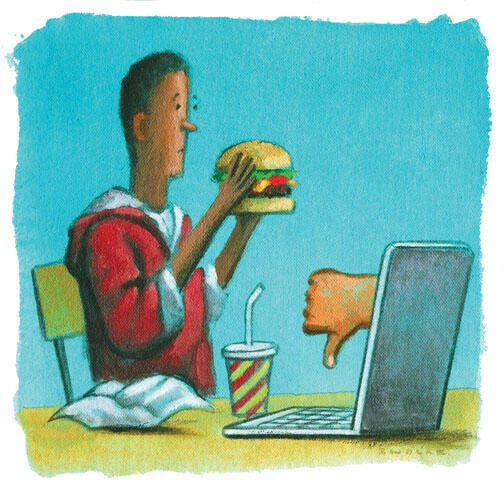Healthy eating: Now just a few clicks away
Princeton students have a lot on their plates. But when it comes to food, are they mindful of what they eat?
The question arose out of my recent discovery of the “nutrition” tool on the Dining Services website. With a few clicks to select from food options and estimates of portion size, a calculator reports the number of calories in a student’s meal.
Joining students for lunch in the Whitman College dining hall on a Tuesday in January, I quickly learned that most had never heard of the tool. As students made their choices from a wide range of entrees (including orecchiette with basil and tomato, 360 calories; cheese pizza, 402 calories per slice), as well as made-to-order sandwiches and salads, I gave some on-the-spot demonstrations.
“I don’t want to know,” said Jennifer Greene ’14, mulling over her plate of rice, orecchiette, chicken taquitos, and grapes. But most students gave it a try, and when all was said and done, satisfaction was more common than disappointment.
The website can nutritionally analyze meals and filter menu items for allergens, as well as designate “great-tasting foods” that are “consciously prepared with wellness in mind.” The consensus among students, however, was that it might take some getting used to. Asked if he would use the calorie-calculator, Adam Mastroianni ’14 responded over a chicken taquito, banana, and cereal, “In a word, no.”
Besides, there were flaws in the system: Items like fries and cookies counted for zero calories, since they weren’t listed on the daily menu. The calorie calculator assumed portion sizes, but for those without a full portion or with more than one, or for those like Jonathan Kuyper, a visiting student in the politics department, portion sizes were a point of further calculation: “Eight ounces — how much is that in metrics?” he wondered.
Other students suggested that counting calories isn’t the best system for judging a meal. For Hannah Cumming ’15, the more important question was, “How can I build up my body with the kind of nutrients I need?” Said David Dworsky ’15, who had 940 calories worth of orecchiette, chicken taquitos, green beans, chicken noodle soup, and sweet potato fries on his plate (“He’s really skinny!” insisted Cumming), “It’s not so much about how much you eat, but about what you eat.” What’s a food that’s OK to consume in excess? “Arugula — pounds of arugula,” said Dworsky.
Arugula aside, what’s the key to healthy eating? “Moderation,” said Katie Goepel ’15, eating grilled chicken, pasta, green beans, and spinach salad. Or, less traditionally, “One bad day and [then] one salad day,” explained Greene. “I don’t know if that works or not.”
Whether or not students use the calculator, its existence is a reminder that there’s no such thing as a free lunch. I sat down to eat my meal, a plate piled high with three kinds of salad: 480 calories and zero guilt.












No responses yet